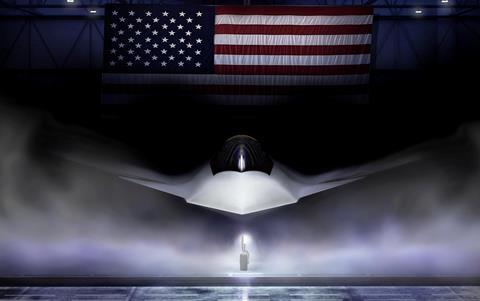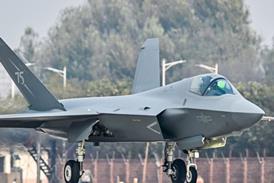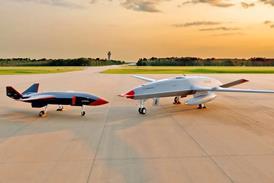Western nations are in a “race against time not to fall behind” in the development of so-called ‘sixth-generation’ combat aircraft, with the likes of Russia, but especially China, also seemingly making rapid strides.
Two European programmes – between France, Germany and Spain; and Italy and the UK, plus Japan – are gaining momentum, while the US Air Force (USAF) has picked Boeing’s F-47 to deliver its secretive Next Generation Air Dominance capability.

Beijing, meanwhile, surprised everyone when it made simultaneous flights with two advanced fighter concepts last December, including of a striking, three-engined Shenyang design widely referred to as the J-36.
But as Ukraine’s audaciously-mounted recent mass drone strike against multiple air bases throughout Russia illustrated, the face of warfare has forever changed, and once-feared strategic assets such as long-range bombers can be effectively neutralised by low-cost means which are increasingly difficult to counter at scale.
Fighter cultures clashed during another recent flashpoint, between neighbours India and Pakistan. Much uncertainty surrounds the events of aerial engagements which Islamabad claims resulted in its air force downing multiple Indian jets, including – if true – the first combat loss of a Dassault Aviation Rafale.
Chinese-built fighters and long-range air-to-air missiles are claimed to have played a key role, within a networked “kill web”, also involving the use of airborne early warning assets.
Propaganda is also alive and well in the next-generation world of air combat. Take as an example US President Donald Trump’s seemingly unscripted references to Washington pursuing a twin-engined development of the Lockheed Martin F-35, which he dubbed the ‘F-55’, and an enhanced ‘F-22 Super’ version of the USAF’s formidable, but numerically limited Raptor.
While such dubious and potentially murky claims may be intended to sow confusion and uncertainty, there is no doubt that all nations involved in such developments are placing great stock in the use of artificial intelligence (AI) as a means of gaining, and maintaining, a competitive edge during future conflict.
AI holds the promise of reducing pilot workload by finding key information from within a mass of generated data, but western officials already caution that some players – and specifically Russia, China, Iran and North Korea – will employ such technology with little regard for ethical considerations.
Against that backdrop, NATO’s 32 member nations have backed a proposal that would see their annual spending on defence climb from a current target of 2% of gross domestic product to 3.5%, topped up to 5% by further investment in the defence and security sector, such as on infrastructure, resilience and support for industry.
Only two NATO nations already met the 2% spending benchmark when it was set in 2014, with this rising to 22 last year. It remains to be seen if the broader 5% goal – which is due to be signed off during the alliance’s annual summit in The Hague in late June – will be achievable for a significant number of its members, and in a relevant timeframe.
The UK, for example, had recently set out an aspiration to hit the 3% mark by only the mid-2030s.

With the Trump administration indicating that it intends to reduce the US military footprint in Europe, and leave the continent to take more of a lead in defending its own patch, counting on the USA to bankroll others will no longer work.
Notably, of NATO’s estimated $1.3 trillion spend in 2024, the USA’s contribution was worth an estimated $818 billion – or 64%.
In this race against time, any delay in digging deeper for defence could prove catastrophic – and much sooner than in the long run.


























